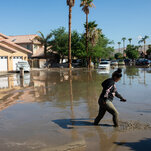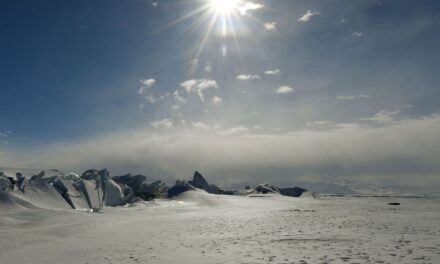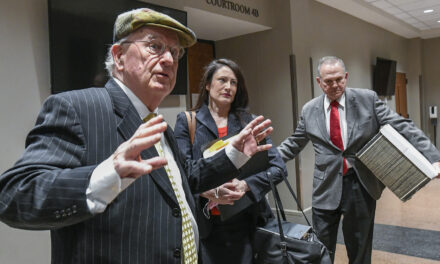
Extreme Weather Hits Around the World as Global Temperatures Rise

A mix of devastating wildfires, tropical storms, mudslides and heat waves foreshadows a future of intensified extremes as the world warms.


July was the hottest month in modern times. Now, August is shaping up to be a month of extremes.
In the United States alone, a tropical storm swept across the Southwest, another menaced Texas, Maui burned, and a blistering heat dome sat atop the middle of the country. In India, torrential rains triggered deadly landslides, Morocco and Japan hit new heat records, and southern Europe braced for another scorching heat wave.
Those extremes have also brought high-stakes tests for public officials: Where public alerts and education worked, death and destruction were minimized. Where they didn’t, the results were catastrophic. Maui has so far recorded more than 100 deaths from the blaze that started Aug. 8, and that number is projected to rise.
Not all of the extreme weather events can be immediately attributed to climate change. But they reflect the hazards that much of the world needs to prepare for as El Niño, a natural weather pattern that can play out over several years, aggravates the weather extremes fueled by the burning of fossil fuels.
Compared with the start of the industrial age 150 years ago, the average global temperature is at least 1.2 degrees higher, and rising still, as the world continues to burn more fossil fuels, the principal cause of global warming. Scientists have repeatedly warned of more heat, wildfires, droughts and intense rainfall with every degree of future warming. For local communities and their government officials, that means having to adapt to sometimes unpredictable hazards and making hard choices about where and how to rebuild after disaster strikes.
“Twenty years from now, a summer like this is going to feel like a mild summer,” said Daniel Swain, a climate scientist at the University of California Los Angeles, in an online briefing Monday afternoon. “In terms of incredibly frenetic pace of global extremes we are seeing this summer, in terms of temperatures and precipitation, that’s only going to get worse as the climate continues to warm.”
Weather records have been broken all summer long around the world. Southern Europe saw record hot days in July, so much so that one Italian newspaper likened it to a “tongue of fire.” Beijing recorded more extreme-heat days this year than ever before since record-keeping began. The fires that raged across the breadth of Canada in July eclipsed annual fire records. In the Florida Keys, sea-surface water temperatures were the hottest on record, climbing into the 90s.
Image
Then, on Sunday came Hurricane Hilary. It dropped a record 13 inches of rain in 24 hours on the Mexican state of Baja California Sur before turning into a tropical storm, barreling up the bathwater-hot Gulf of California and bringing record rainfall to Southern California.
Tropical storms are rare for this part of the world. But in a hotter climate, scientists said, California can expect to get more extreme rains. Southern California got a taste of that earlier this year, with a parade of powerful storms that drenched the region.
“Regardless of the source of the rain, we need to prepare for a lot more of it, even in our drought-prone state,” said Morgan E. O’Neill, an assistant professor of atmospheric science at Stanford University.
By and large, the two biggest cities in the region, Los Angeles and San Diego, escaped deaths and major damage, according to local and state officials Monday. It will take several days to thoroughly assess the effects on smaller towns and rural communities in desert and mountain areas in Southern California. Homes flooded in and around Palm Springs, parts of Riverside County were knee-high in mud and Death Valley National Park was closed, its 3.4 million acres of desert wilderness littered with debris from flash floods.
Speaking at a news conference in Los Angeles Monday morning, Paul Krekorian, the City Council President, urged city residents to look ahead and get ready for the next disaster. “Use this as your opportunity to consider what can you and your family do better to prepare for the next incident,” he said. “Because we know there will be one,”
The contrast with Maui is striking.
The wildfires centered around the historic town of Lahaina are one of the country’s deadliest disasters. Local officials are under mounting scrutiny for failing to activate the island’s network of emergency sirens.
A spokesman for the state’s emergency management agency said other alert systems were activated, including on cellphones, but many residents said they didn’t receive warnings. Damage to cellphone and electric lines played a role. Ten days after the fire, Maui’s emergency management director resigned.
Maui’s fire risks have been steadily growing.
Hawaii overall has been getting less rainfall over the past 30 years. More than a third of Maui county has been classified as severe or moderate drought this summer. Invasive grasses, left unmanaged, have become ready fuel for fires. Average temperatures have risen, as they have worldwide, drying out vegetation even faster. In short, Hawaii is more flammable.
Maui County cited those growing wildfire risks when it sued oil companies for what it called a “coordinated, multifront effort” to conceal that the burning of their products fuels climate extremes. A spokesman for the American Petroleum Institute, a trade group, has called the litigation “meritless.” The case is pending.
Somini Sengupta is The Times’s international climate correspondent. She has also covered the Middle East, West Africa and South Asia and is the author of the book, “The End of Karma: Hope and Fury Among India’s Young.” More about Somini Sengupta
Source: https://www.nytimes.com/2023/08/22/climate/tropical-storm-california-maui-fire-extreme-august.html


















